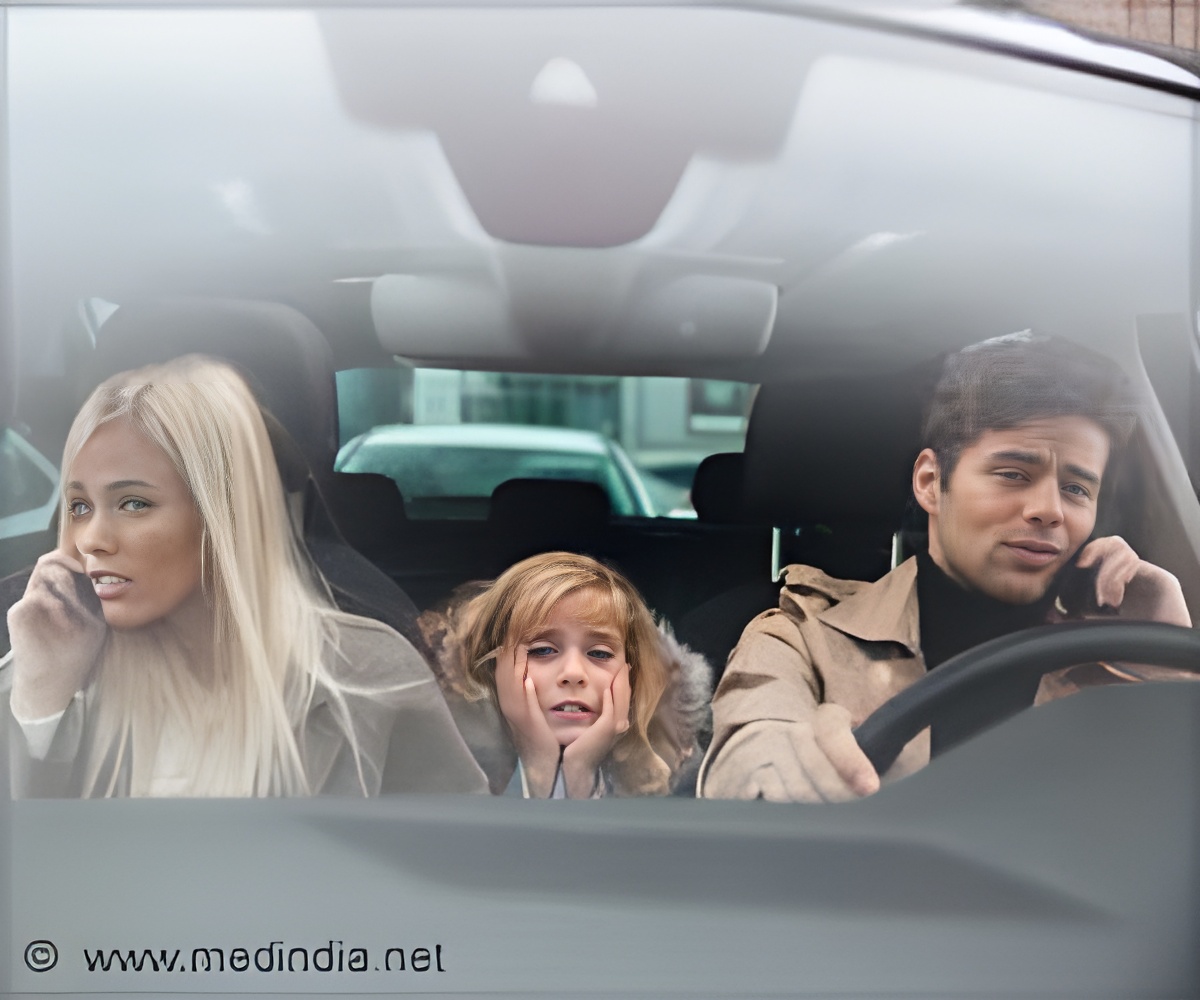Parents regularly use their cell phones to talk, text messages and use social media while driving their young children in the car which may lead to risky behaviors associated with distracted driving.

‘Parents use their cell phones to talk, text messages and use social media while driving their young children which may lead to risky behaviors associated with distracted driving.’





The study also found a correlation between cell phone use while children were in the car and other risky driving behaviors, such as not wearing a seat belt and driving under the influence of alcohol whether or not children were present in the car.Crash fatalities and injuries caused by distracted driving constitute a public health crisis in the U.S., resulting in about one in four motor vehicle crashes. Previous research suggests that causes of distracted driving by parents and caregivers include talking on hand-held or hands-free cell phones or using phones to text, email, or access the Internet.
Researchers wanted to identify specific factors associated with cell phone-related distracted driving in parents and caregivers of children between the ages of 4 and 10.
"Technology has become increasingly intertwined with our daily lives," said lead author Catherine McDonald, Ph.D., RN, FAAN, a Senior Fellow with CHOP's Center for Injury Research and Prevention and an Assistant Professor of Nursing in the Family and Community Health Department at Penn Nursing.
"The results from this research reinforce that risky driving behaviors rarely occur in isolation, and lay the groundwork for interventions and education specifically aimed at parents who drive with young children in their cars."
Advertisement
In the preceding three months, 52.2 percent of parents had talked on a hands-free phone while driving with a young child in the car, while 47 percent had done so with a hand-held phone. The study also found that 33.7 percent of parents read text messages while 26.7 percent sent text messages while driving with children. Social media also contributed to distracted driving, with 13.7 percent of respondents reporting using social media while driving with children.
Advertisement
Finally, the study looked at parent and caregiver risky behavior associated with driving, including not wearing a seat belt as a driver and driving under the influence of alcohol, whether or not their children were in the car. The researchers saw a direct correlation between a history of driving under the influence and increased likelihood of all types of cell phone use while driving with children in the car. All cell phone-related distracted driving behaviors other than talking on a hands-free phone increased if a person did not always wear their seat belt while driving with children.
"When clinicians are discussing child passenger safety with families, they can use the opportunity to ask and educate about parental driving behaviors such as seat belt use and cell phone use while driving," McDonald said.
"This type of education is especially pivotal today, as in-vehicle technology is rapidly changing and it is increased - and seemingly constant - reliability on cell phones. However, it is also important to note that even parents who did not engage in risky behaviors, such as not wearing a seat belt as a driver or driving under the influence of alcohol, still used their cell phones while driving."
McDonald said that future studies are needed to understand if unsafe distracted driving behaviors by parents influence their children as they become young drivers in the future.
Source-Eurekalert












